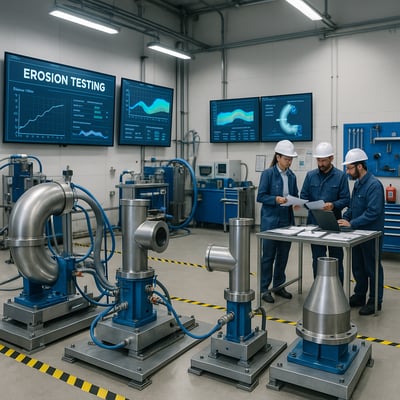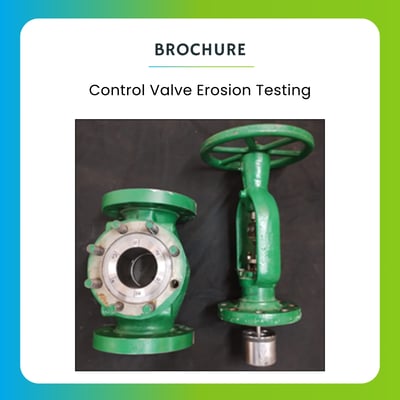In today’s industries, materials are constantly exposed to harsh environments, making durability testing more critical than ever. Sand blasting, also known as abrasive blasting, is a key erosion testing technique that simulates real-world wear using high-velocity abrasive particles. This process reveals coating weaknesses, predicts material lifespan, and helps engineers design stronger, more reliable solutions across sectors like construction, manufacturing, and energy.
What Is Sand Blast Testing?
Sand blast testing is a specialized form of erosion testing used to assess the durability of protective coatings and materials. In this process, steel specimens—typically with applied coatings—are placed in a sand impingement cell and subjected to abrasive sand particles propelled at high velocities. The goal: simulate harsh, real-world erosion environments to evaluate how coatings resist wear and degradation over time.
The origins of sand blasting can be traced back to the late 19th century, when it was first introduced as a method to clean and prepare surfaces. Over time, the technique has evolved significantly, with advancements in technology and materials enhancing its precision and efficiency. Today, sand blasting employs a range of abrasives beyond traditional sand, including glass beads, steel grit, and aluminum oxide, each offering unique properties suited to specific applications. This diversification has expanded the scope of sand blasting, making it an indispensable tool in modern material processing and testing.
Sandblasting, sometimes known as abrasive blasting, is the broader industrial process of propelling a stream of abrasive material against a surface to clean, smooth, or strengthen it. In the context of erosion testing, this principle is adapted in a controlled environment to study material loss, coating resistance, and overall durability under accelerated wear conditions.
This testing is a key capability within Tridiagonal Solutions’ Technology Validation & Scale-up Centre, designed to ensure component reliability in demanding settings like the oil and gas sector.
How Sand Blast Testing Works: Technical Overview

The process of sand blasting in erosion testing involves several key steps, each meticulously designed to replicate the conditions that materials face in the field. The first step is the selection of the abrasive material, which is chosen based on the specific requirements of the test. Common abrasives include silica sand, aluminum oxide, and garnet, each offering distinct properties such as hardness, particle size, and shape. The choice of abrasive directly influences the test results, making it a critical factor in the testing process. Tridiagonal’s sand blast facility provides full control over testing variables to replicate various field conditions accurately:
- Airflow velocity: Adjustable between 10–50 m/s
- Particle size: Exceeding 100 µm
- Sand feed rate: Greater than 1 kg/h
- Impingement (attack) angle: From 0° (grazing) to 90° (perpendicular).
Following exposure, the amount of coating removed is quantified using:
- Weight loss measurements
- Thickness changes, as gauged by precision instruments
- Table images and microscopic images
This combination enables detailed insights into wear resistance, coating integrity, and potential design or formulation improvements.
Why Sand Blast Testing Matters in Erosion Performance?
- Realistic Simulation of Harsh Conditions
By tweaking airflow, particle size, and angle of impact, sand blast testing mimics erosion scenarios encountered by equipment, like slurry-laden pipelines or abrasive environmental exposure. - Quantitative Evaluation of Coating Resilience
Measuring weight and thickness loss post-test offers clear, numerical metrics to compare the relative performance of different coatings or material finishes. - Customization Across Use Cases
The flexible test design meets varied industrial needs, especially critical for sectors like oil & gas, where erosion significantly affects asset integrity. - Enhanced Predictive Maintenance
Insights from test data support accurate prediction of service life and maintenance scheduling, reducing downtime and maintenance TCO. - Optimization of Coating Formulations
These tests directly help engineers refine coating composition and thickness, maximizing performance for specific erosion scenarios.
Sand blast erosion testing plays a pivotal role in enhancing material performance and durability across a wide range of industries. By simulating the abrasive forces encountered in real-world environments, this testing method provides valuable insights into how materials respond to wear and tear. The ability to identify weaknesses and optimize material properties through sand blast testing is essential for developing products that can withstand the rigors of everyday use, ensuring longevity and reliability.
Tridiagonal Solutions’ Sand Blast Facility: A Competitive Edge
Located at Asia’s premier Technology Validation & Scale-up Centre, Tridiagonal Solutions offers:
- Technically advanced erosion testing capabilities—including sand blast testing—within a broader erosion test suite (including screens, elbows, bends, pipes, flexible risers, coated materials, valves)
- Highly controllable test conditions, allowing for airflow, particle size, feed rate, and impact angle adjustment for highly tailored simulations
- Quantitative performance data, enabling evidence-based coating optimization strategies.
- Cross-disciplinary domain expertise, backed by decades of flow and erosion testing experience in oil & gas and beyond
Tridiagonal Solutions' sand blast facility stands out by combining state-of-the-art instrumentation with domain knowledge and customizable testing regimes, empowering engineers to make informed decisions that extend component life, reduce costs, and drive operational reliability. Enable your next-generation materials and coatings to thrive under abrasive conditions. Contact Tridiagonal Solutions to explore customized sand blast erosion testing tailored to your industry needs.
Related Use Cases

Brochure
Erosion of Elbow and other pipe component Testing Facility
.png?length=400&name=corrosion%20testing%20(1).png)
Brochure
Lab Scale Corrosion Testing

Brochure
Field Scale Corrosion Testing

Brochure
Control Valve Erosion Testing
Have a Question?
If you need assistance beyond what is provided above, please contact us.

